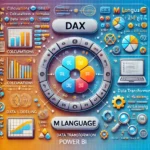SPSS vs. Excel: Choosing the Right Tool for Data Analysis
Data analysis is a fundamental component of decision-making in various fields, from academia to business. When it comes to data analysis, two popular tools stand out: SPSS (Statistical Package for the Social Sciences) and Excel. In this article, we will explore the strengths and weaknesses of each tool and provide a comparison table to help you make an informed choice.
Understanding SPSS:
SPSS, developed by IBM, is a specialized software designed for statistical analysis. It is widely used in social sciences, research, and various scientific disciplines for its advanced statistical capabilities.
Key Features of SPSS:
- Statistical Analysis: SPSS offers a comprehensive range of statistical tests and procedures, making it suitable for complex data analysis.
- Data Visualization: While it provides basic charting and graphing options, SPSS is primarily focused on statistical outputs.
- Data Management: SPSS allows for efficient data manipulation, transformation, and cleaning.
- Advanced Analytics: It supports advanced statistical techniques like regression analysis, factor analysis, and ANOVA.
- Syntax Support: Advanced users can use SPSS syntax for more precise control and automation.
Exploring Excel:
Excel, a Microsoft Office application, is a versatile spreadsheet software widely used for various tasks, including data analysis. It’s known for its ease of use and flexibility.
Key Features of Excel:
- Data Manipulation: Excel excels in data manipulation and organization, making it suitable for a wide range of tasks.
- Data Visualization: It offers a variety of charting and graphing options for basic data visualization.
- Formula-Based Calculations: Excel is renowned for its formula capabilities, enabling users to perform calculations and build models.
- Accessibility: Almost everyone is familiar with Excel, making it accessible to a broad audience.
- Integration: It seamlessly integrates with other Microsoft Office tools like Word and PowerPoint.
https://synapsefabric.com/2023/09/01/spss-vs-power-bi-choosing-the-right-data-analysis-tool/
SPSS vs. Excel: A Comprehensive Comparison
Let’s compare SPSS and Excel across various dimensions:
| Aspect | SPSS | Excel |
|---|---|---|
| Primary Use Case | Advanced statistical analysis and research. | General data analysis and spreadsheet tasks. |
| Statistical Analysis | Specialized for in-depth statistical analysis. | Limited to basic statistical functions. |
| Data Visualization | Primarily focused on statistical outputs. | Offers basic charting and graphing tools. |
| Data Management | Robust data manipulation and cleaning features. | Good data organization but not as specialized. |
| Advanced Analytics | Supports complex statistical techniques. | Limited support for advanced analytics. |
| Learning Curve | Steeper learning curve due to statistical complexity. | User-friendly and widely familiar interface. |
| Automation | Supports automation through syntax scripting. | Automation possible but less specialized. |
| Accessibility | More specialized, targeted at researchers. | Widely accessible, suitable for various users. |
| Integration | Limited integration beyond data analysis. | Seamless integration with other Office apps. |
Making the Right Choice:
The choice between SPSS and Excel depends on your specific needs and expertise. If you require in-depth statistical analysis, especially in research or scientific fields, SPSS is the preferred choice. However, for general data analysis, spreadsheet tasks, and a user-friendly interface, Excel is more suitable.
In some cases, both tools can complement each other. You might perform initial data cleaning and organization in Excel and then transfer the data to SPSS for advanced statistical analysis.
Ultimately, your decision should align with your goals, the complexity of your data analysis tasks, and your familiarity with the tools. Both SPSS and Excel have their strengths, and understanding them is crucial in making an informed choice for effective data analysis.






